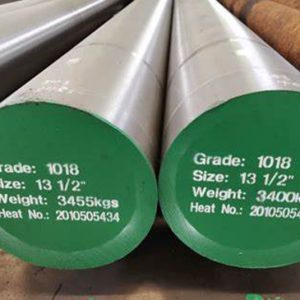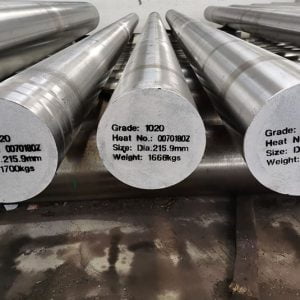Introduction

Annealed steel is a crucial material in various manufacturing processes due to its enhanced machinability, improved ductility, and reduced hardness. This comprehensive guide aims to provide an in-depth understanding of annealed steel, its properties, applications, and the annealing process. Whether you’re in the automotive, construction, or machinery industry, understanding how annealed steel can be beneficial to your projects is essential.
What is Annealed Steel?
Definition
Annealed steel refers to steel that has undergone a heat treatment process known as annealing. This process involves heating the steel to a specific temperature, holding it at that temperature for a set period, and then slowly cooling it. The purpose of annealing is to reduce hardness, improve ductility, and relieve internal stresses.
Properties of Annealed Steel
Annealed steel exhibits several key properties that make it suitable for various applications:
- Improved Ductility: The steel becomes more flexible and can be shaped or bent without breaking.
- Enhanced Machinability: Easier to cut, drill, or machine due to reduced hardness.
- Reduced Hardness: Lower hardness levels make the material less brittle.
- Relieved Internal Stresses: Helps prevent warping or distortion during further processing.
The Annealing Process
Steps in the Annealing Process
- Heating: The steel is heated to a temperature above its recrystallization point, typically between 1,300°F and 1,700°F (700°C and 925°C).
- Soaking: The steel is held at the annealing temperature for a specific period to allow the heat to penetrate the entire material.
- Cooling: The steel is slowly cooled, usually in a furnace, to room temperature.
Types of Annealing
- Full Annealing: Involves heating the steel to a temperature above its critical range and then slowly cooling it. This process results in the softest and most ductile form of steel.
- Process Annealing: Performed at lower temperatures and primarily used to soften steel that has been hardened through cold working.
- Stress Relief Annealing: Used to reduce residual stresses in steel without significantly altering its structure.
Applications of Annealed Steel
Automotive Industry
Annealed steel is widely used in the automotive industry for parts that require good machinability and ductility. Components such as engine parts, transmission gears, and various brackets benefit from the properties of annealed steel.
Construction Industry
In construction, annealed steel is used for structural components, reinforcing bars, and fasteners. Its improved ductility and reduced hardness make it easier to shape and weld, which is crucial for building applications.
Machinery and Tooling
Annealed steel is ideal for manufacturing machinery parts and tooling due to its enhanced machinability. It is used for producing dies, molds, and various machine components that require precise shaping and durability.
Consumer Goods
Annealed steel is also found in consumer goods such as kitchenware, appliances, and electronics. The material’s flexibility and reduced hardness allow for the production of intricate designs and durable products.
Advantages and Disadvantages of Annealed Steel
Advantages
- Improved Workability: Easier to cut, shape, and machine.
- Enhanced Ductility: Can be bent or formed without cracking.
- Stress Relief: Reduces internal stresses, minimizing the risk of warping or distortion.
- Increased Toughness: Improved ability to withstand impact and shock.
Disadvantages
- Cost: The annealing process adds to the overall production cost.
- Time-Consuming: The process requires precise control and time, potentially slowing down production.
- Surface Oxidation: Can occur during the heating process, requiring additional surface treatment.
Comparing Annealed Steel to Other Heat-Treated Steels
Below is a comparison table of annealed steel with other common heat-treated steels, highlighting key differences in properties and applications.
| Property | Annealed Steel | Quenched & Tempered Steel | Case-Hardened Steel |
|---|---|---|---|
| Hardness | Low | High | Variable (surface hard) |
| Ductility | High | Moderate | Low (core), High (surface) |
| Machinability | High | Low | Moderate |
| Typical Applications | Automotive, Construction | Tools, Structural Components | Gears, Bearings |
| Cost | Moderate | High | High |
| Stress Relief | Yes | No | Yes |
Best Practices for Using Annealed Steel

Selecting the Right Grade
Choosing the appropriate grade of annealed steel is crucial for ensuring optimal performance. Consider factors such as the required strength, ductility, and corrosion resistance for your specific application.
Proper Storage and Handling
Store annealed steel in a clean, dry environment to prevent rust and contamination. Handle the material with care to avoid surface damage, which can affect its performance.
Machining and Forming Techniques
Utilize appropriate machining and forming techniques to maximize the benefits of annealed steel. Tools should be sharp and well-maintained, and machining speeds should be adjusted to prevent excessive heat build-up.
Welding Considerations
When welding annealed steel, ensure that the material is clean and free of contaminants. Preheating and post-weld heat treatment may be necessary to prevent cracking and ensure strong weld joints.
Conclusion
Annealed steel is a versatile and essential material in manufacturing, offering improved machinability, ductility, and reduced hardness. By understanding the annealing process and its benefits, you can make informed decisions about selecting and using annealed steel in various applications. Whether you’re in the automotive, construction, or machinery industry, annealed steel can significantly enhance your production efficiency and product quality.
FAQ
1. What is the primary purpose of annealing steel?
The primary purpose of annealing steel is to reduce its hardness, improve ductility, and relieve internal stresses, making it easier to machine and shape.
2. Can all types of steel be annealed?
Most types of steel can be annealed, but the process and results may vary depending on the steel’s composition and the specific requirements of the application.
3. How does annealed steel differ from tempered steel?
Annealed steel is softer and more ductile, whereas tempered steel is harder and stronger. Tempering involves heating quenched steel to a lower temperature to improve toughness.
4. Is annealed steel more expensive than other types of steel?
Annealed steel can be more expensive due to the additional processing involved. However, its improved workability and performance can offset the initial cost in many applications.
5. How can I tell if steel has been properly annealed?
Properly annealed steel will have a uniform grain structure, reduced hardness, and improved ductility. Testing methods such as hardness tests and microscopic examination can confirm the quality of annealing.









